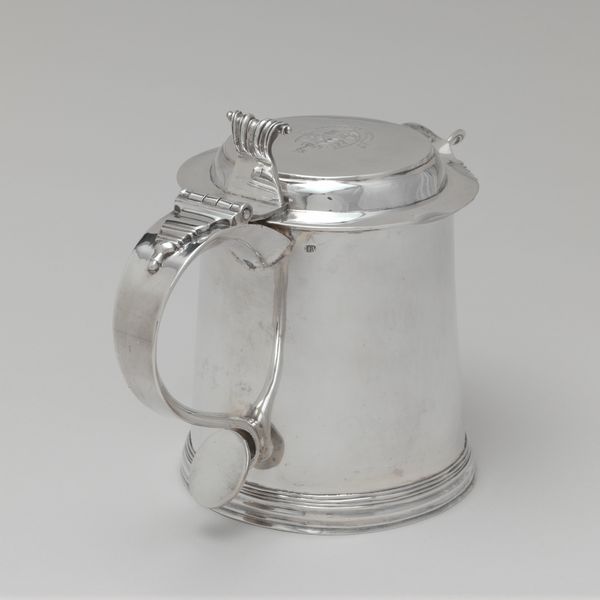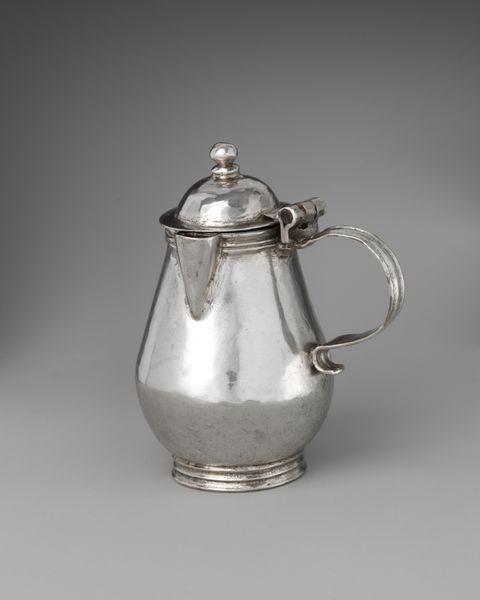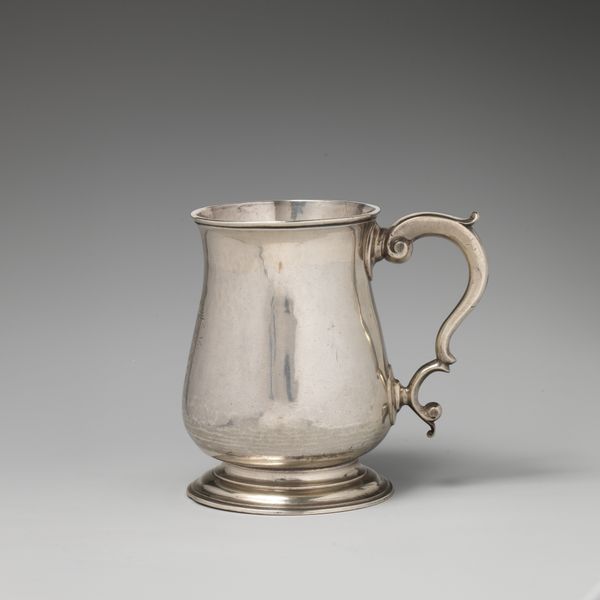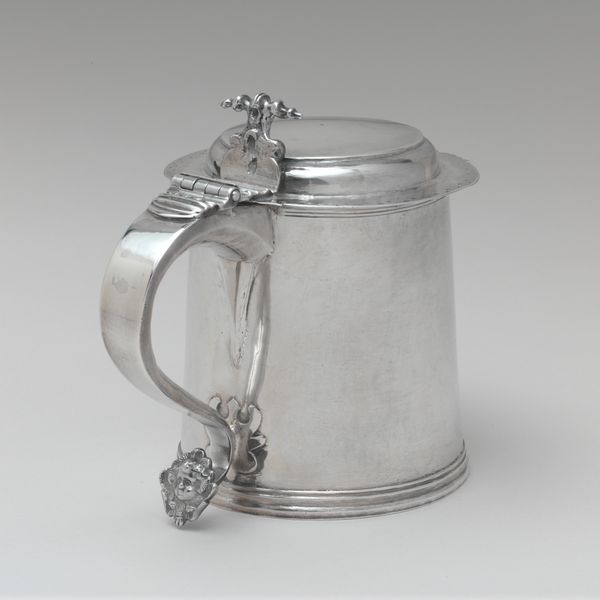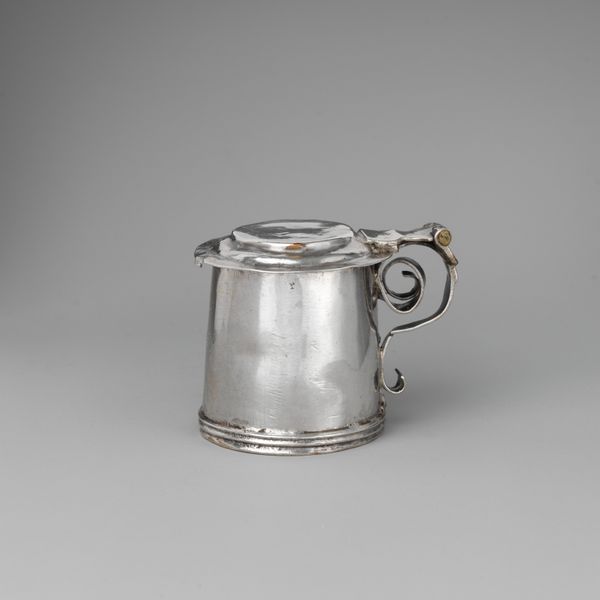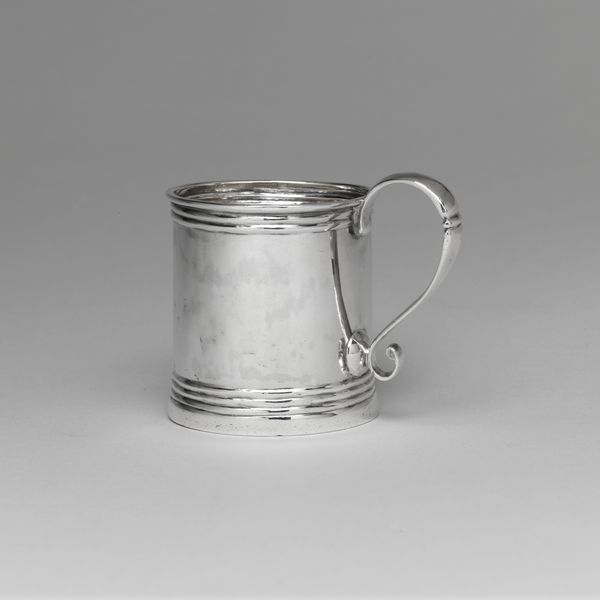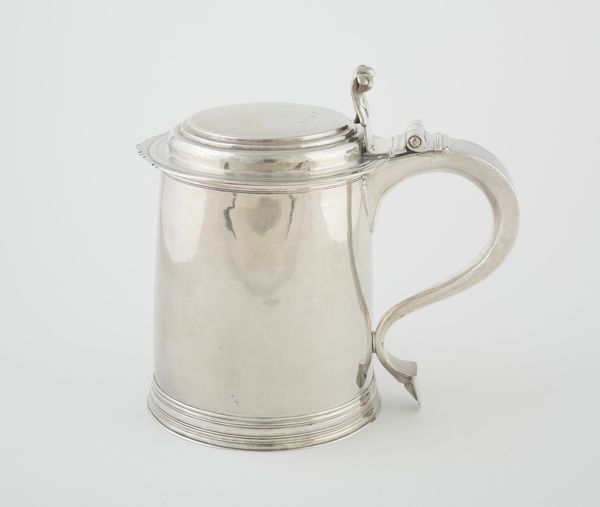
silver, metal, sculpture
#
silver
#
baroque
#
metal
#
sculpture
#
decorative-art
Dimensions: Overall: 1 7/8 x 2 5/8 in. (4.7 x 6.6 cm)
Copyright: Public Domain
Editor: Here we have a tiny, shimmering silver mug from the late 17th century. Its small size makes it appear almost like a toy. It seems incredibly precious, maybe even impractical. What can you tell me about this object in a historical context? Curator: It’s charming, isn't it? Looking at its historical moment, during the Baroque era, it suggests intriguing possibilities about its function and place within society. These miniatures were not always playthings. Consider the rising merchant class and their fascination with displays of wealth and status. Editor: So it’s more of a symbol than a functional object? Curator: Precisely. It speaks volumes about the performance of status in that era. Think about the elaborate feasts, the intricate table settings. Where might such a miniature fit within that tableau? Consider its potential as a symbol of aspiration. Editor: It’s fascinating to think of something so small carrying so much weight, culturally. The detail, even at this scale, is really impressive. Curator: Indeed, the level of craftsmanship reflects the resources available. The baroque aesthetic is all about dramatic detail, creating an object intended for admiration, further reinforcing social hierarchy. How does knowing that change your interpretation of this “toy”? Editor: I hadn't really considered its social purpose. Thinking about its position as an icon, a sort of sculptural celebration of wealth... it reframes the piece completely for me. It goes from charming to quite pointed, really. Curator: It shows us how objects, even tiny ones, are woven into the larger fabric of power, wouldn't you agree? Editor: Absolutely! Now I understand that every object has the potential to communicate specific values about its culture and time.
Comments
No comments
Be the first to comment and join the conversation on the ultimate creative platform.
